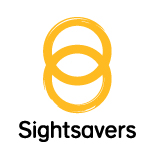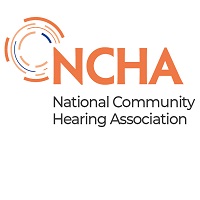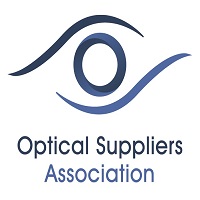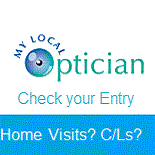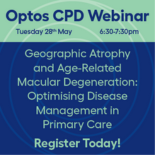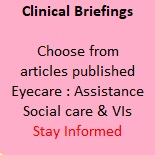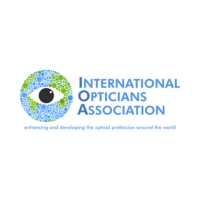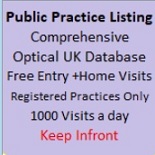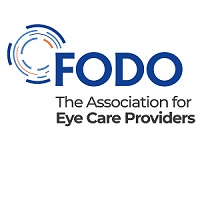Night Driving for many especially ageing motorists carries many dangers
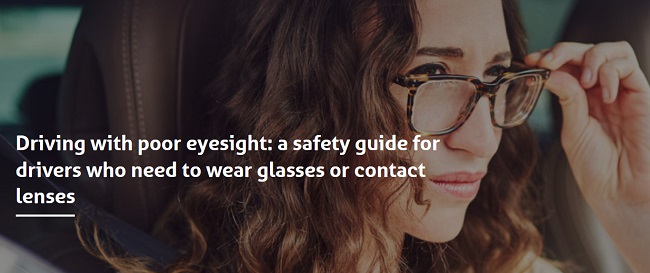
Opchat News has been working with Comparethemarket the insurance comparison facilitator with a special interest in safe motoring to create a checklist and advisory story on how to improve confidence in safe driving in poor visibility conditions especially with dark evenings soon to be with us.
The document is published in full here and we will archive the full document in our Clinical Briefings zone for continued use. The story will also be reported in our public information service website, www.mylocaloptician.co.uk now regaining its readership since its relaunch this month.

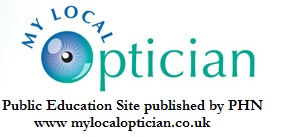

Driving at night: safety tips for driving in the dark
If you struggle with driving at night, you’re not alone. Many drivers find it trickier to drive in low-light and night-time conditions.
It can be hard for our eyes to adjust between the intensity of headlights and dark roads. There are also issues such as winter sun, which can affect our vision as the sun sets low on the horizon.
The different driving conditions could increase the chance of having an accident, therefore it’s important to make sure that you can safely tackle these common driving challenges.
In this guide, we explore why evenings and night-time can be a more challenging time to drive and provide safe ways of improving your driving skills.
UK night-time driving statistics
The Royal Society for Accident Prevention (RoSPA) revealed that as many as 40% of all collisions on UK roads happen in the hours of darkness. This is in no short part due to the additional challenges faced when driving in dimmer conditions.
The RAC points out that a lot of drivers feel less comfortable driving in the dark because of vision challenges associated with headlights.
Despite existing to help us see better in lower visibility scenarios, modern beams can have the opposite effect on many drivers. A recent survey highlighted some figures:
- 89% of UK drivers think car headlights are too bright.
- 88% of people say they get dazzled by beams when driving.
- 63% think the issue with headlights is worse than it was a year or two ago.
- 64% believe the beams increase the risk of an accident.
- 67% are unable to tell the difference between dipped and full-beam oncoming headlights.
As many as 16% of those who were surveyed went as far as to say they would avoid driving at night altogether as a result of headlight glare.
Fatigue also plays a part in night-time struggles. Brake suggest as many as 10-20% of all incidents on UK roads are caused as a result of the driver being tired while travelling. This was more of a factor in the morning – with their report highlighting that someone was 20x more likely to fall asleep at 6am than they were at 10pm.
Perhaps the most interesting findings were those of UK optician, Essilor. They discovered as many as 17 million drivers in Britain struggle to see at night. The problem was particularly challenging for older drivers. They found that it can take as long as nine seconds for drivers aged 65 or older to recover after being dazzled by bright lights in the evening.
Common challenges of driving at night
Driving when it’s dark isn’t something everyone will feel comfortable with doing. There are different hazards when the sun goes down to those which you could face during the day. While these shouldn’t put you off driving at night altogether, they’re important factors to keep in mind:
- Reduced vision. A dark environment makes it tougher to absorb our surroundings. The ability to see clearly in the dark (referred to as “night vision”) becomes more of a challenge as we age. Driving on poorly lit roads in the evening can be unsettling if you find yourself struggling to see in the dark.
- Poorer vision at night reduces the normal daytime clues we get when cars are approaching junctions, clues like trees, and perspective disappear and judging distances jut by gauging the position of headlight beams is much more difficult in the dark.
- Rush hour in winter. While less of a factor in the warmer months, rush-hour traffic is an additional hurdle in the winter. Busy roads, coupled with dimmer conditions, can make it harder to react as quickly when split-second decisions might be needed.
- Fatigue. When we’re tired our responses become dulled. In extreme cases we’re also more susceptible to falling asleep behind the wheel. While a lot can contribute to us feeling exhausted when we drive, the chances of being fatigued are higher during periods of the day which are dark. The evening and early morning are when we typically lack energy most.
- Winter brings the need for warmth in our cars and the car heater maybe a benefit on a cold day, but it reduces the fresh air level and makes us feel sleepier.
- Windscreen blemishes amplified. A dirty windscreen is distracting no matter what the time of day. In the evening, bright lights can be amplified – causing excess levels of glare. Rain in the evening can also have the same effect. Dirty windscreens provide an effect called “veiling” which decreases our visual acuity a name for a measure of what we can when we are wearing a prescribed optical correction either in specs or contact lenses.
- Winter also provides for those horrible frosty mornings when we have to scrape the ice from the windows of the car. Often, we do not spend enough time cleaning the whole screen allowing a reduced field of view and the masking of objects like motorcycles and bikes.
- Clean well then dry with newspaper and then allow the screen to demist before setting off.
- Make sure you do not apply a tint to the windscreen which is darker than the legal limit.
- One more “don’t” Don’t be tempted to wear “Driving Glasses”. These are banned in many countries. They work on the basis that things look brighter through yellow tinted lenses but this is because the eye is more sensitive to yellow light and its an apparent fallacy that images are actually brighter. Any tint at night reduces the amount of light reaching the retina.
Why do ageing motorists find it hard to drive at night?
- Many older people have poor night driving vision because a large number have early cataracts that they are unaware of and unfortunately many drivers have neglected to have an eye exam for more than 4 years. The recommendation is for a sight test every 2 years and in a larger number of elderly patients the recommended retest time is 1 year.
- Sight and vision rarely drop dramatically (if it does you should immediately seek help from a professional optometrist) So it’s a gradual reduction over months and years which most do not notice. So, a sight exam is key to find out about the health of your eyes. Many will discover that they have reduced visual fields due to glaucoma or retinal problems often linked to Diabetes Type ll.
- There is even a scientific reason for poorer distance vision at night known as the “Red Shift” where our sensitive retina detects light better from the red end of the spectrum. This shift artificially makes us slightly more short-sighted at night so those driver with a small amount of short sight during the day will find their myopia a bigger problem at night.
- People with cataracts removed and replaced by intraocular lenses (“IOLs”) have often opted for progressive intraocular lenses which are good for middle distances but in poor light provide poorer distance vision and driving lenses are required over the corrected eyes.
Safety tips for driving in the dark
For those wanting to master their night-time driving abilities, there are some simple steps which can be taken to make this kind of travel easier to manage.
- Be responsible with your beams. While using high beams at all times is tempting, it can be distracting for oncoming vehicles. Make sure to dip yours whenever you see the lights of another car approaching. Also steer clear of full beams in fog. It will amplify the thickness of the fog, making it harder to see through.
- If an approaching car’s lights glare in your eyes, try to look down away from the direct beam.
- If a car following you has not dipped his lights click your interior mirror on the secondary setting to cause the light to be indirectly reflected.
- Be extra vigilant of animals. Wild animals, such as foxes, deer, and badgers, tend to be primarily nocturnal. That means they’re more likely to appear and sporadically cross the road during the evening. This can be a particular issue with deer and muntjacs who’ll often sprint without warning across a road. Make sure to look for glowing eyes on the side of roads.
- Practice night-time driving. If you lack the confidence to drive in the evening, think about practising with a friend or family member. Find a quiet area to drive around. This can help a person to feel more comfortable manoeuvring, parking, and generally driving in the dark.
- Stay home when tired. If you’re feeling too tired to concentrate on your driving, don’t take the risk. If you absolutely have to drive through the night, regularly pull over and take a mental break. When you do so, make sure you’re stopping in a safe place. The motorway hard shoulder, for example, is one of the most dangerous of options.
- Keep your windscreen clean. We’ve already discussed how a dirty windscreen can be more distracting at night than during the day. Use glass cleaner and a cloth to wipe away any dirt or smudges before your journey. Do this in a circular motion, then repeat the process if you feel like it still needs it.
- Carry essential items with you. While it might not be something you’ve thought of before, bringing a mix of essential items with you could prove useful. This is especially true if you happen to break down while you’re out. Some of the essentials to bring with you include:
- A torch mounted on a headband.
- A blanket and extra warm clothing
- A spare tyre, and a jack to fit it
- A portable mobile charger
- An ice-scraper or de-icer
- An emergency Red Triangle to place behind your car.
- A high reflective jacket for you and your passenger (the above two items are mandatory in Europe for obvious reasons)
- Drive at lower speeds. Use excess levels of caution if you’re really uncomfortable driving in the dark. Drive at a pace which feels comfortable for you, and don’t let other road users force you to do otherwise. If it gets to the point where you feel unconfident continuing, pull over where it’s safe to do so and take a moment to relax.
Learner drivers and driving at night.
Driving in the dark can be particularly difficult for those who are less experienced. Learner drivers are getting to grips with the concept of driving in general. Factoring in the environmental challenges of night-time only serves to heighten their challenge.
Some countries have gone as far as to restrict the hours in which learner drivers can be on the roads in the evenings. As of right now, learners in the UK can drive at night so long as they:
- Have a valid provisional licence
- Are accompanied by an instructor, or a friend or family member with a full licence which they have held for at least three years and who are the age of 21 or over. They’re also qualified to drive the type of vehicle the learner is driving.
- Are insured to be driving the vehicle they’re in
- Use “L” plates (or “D” plates in Wales) to signify they are a learner.
Across the past few years, there have been discussions held around the introduction of Graduated Driving Licences. These would introduce new measures and restrictions for those who have just received a full licence. This could extend to restricted hours of driving in the evening, or during busy periods.
Technologies used to help with driving at night.
Technological development is at the forefront of almost every area of modern life.
Night-time driving is no exception. Explorative forms of tech are being worked on all the time to make the hassle of driving during the evening easier for everyone.
Let’s explore some of them which are currently on trial:
- Self-driving cars. This increasingly popular form of transport is being backed by countries across the world – the development of self-driving cars could generate as many as 38,000 new jobs within Britain’s industry that would be worth £41.7bn by 2035. What’s more, with human error accounting for an estimated 88% of all accidents, the number of crashes could drastically drop.
- High-tech sensors. Sensors already exist in self-autonomous cars to work out if a road is safe to drive down or not. Fitting these to manually driven vehicles could provide drivers with an alert to help them avoid an accident.
- Retroreflective material. Most road signs are easily visible during the day but can be harder to spot at night until you’re close to them. The solution to this could be a thin film of retroreflective material, which when laid over a sign makes it easier to spot at night. This helps to reduce the need to make last-second manoeuvres for things like lanes ending, or sudden changes to the speed limit.
- Blind spot detection. It can be hard to see vehicles in your blind spot, even during daylight. At night, this task becomes tougher. This technology sends a driver a signal when something is in their spot. In some cases, a camera might be used to show the driver what the potential hazard is.
- Collision-detecting software. This type of software acts as something of a hybrid between an autonomous car and a traditional vehicle. While the driver is still in control of the pedals, steering, changing of gears, and signalling, the car is able to detect if it’s about to be involved in an accident. At this point it will not only alert the driver, but also carry out actions like applying extra tension to the seatbelts, or pre-charging the brakes for a sudden stop.
The advice guide was created by a collaboration with Comparethemarket and Opchat News
Acknowledgements to
RAC.
RoSpa
R Hutchinson BSc., FCOptom, FSMC Past President of GP & Primary Care at Royal Society of Medicine.
Links

Comparethemarket
https://www.comparethemarket.com/car-insurance/content/driving-at-night/
![]() Mylocaloptician
Mylocaloptician
Further links: 2 years ago Opchat News reported that “Almost half of Brits unaware they could be fined for driving without prescribed glasses.” (Read Here)
August 2023







